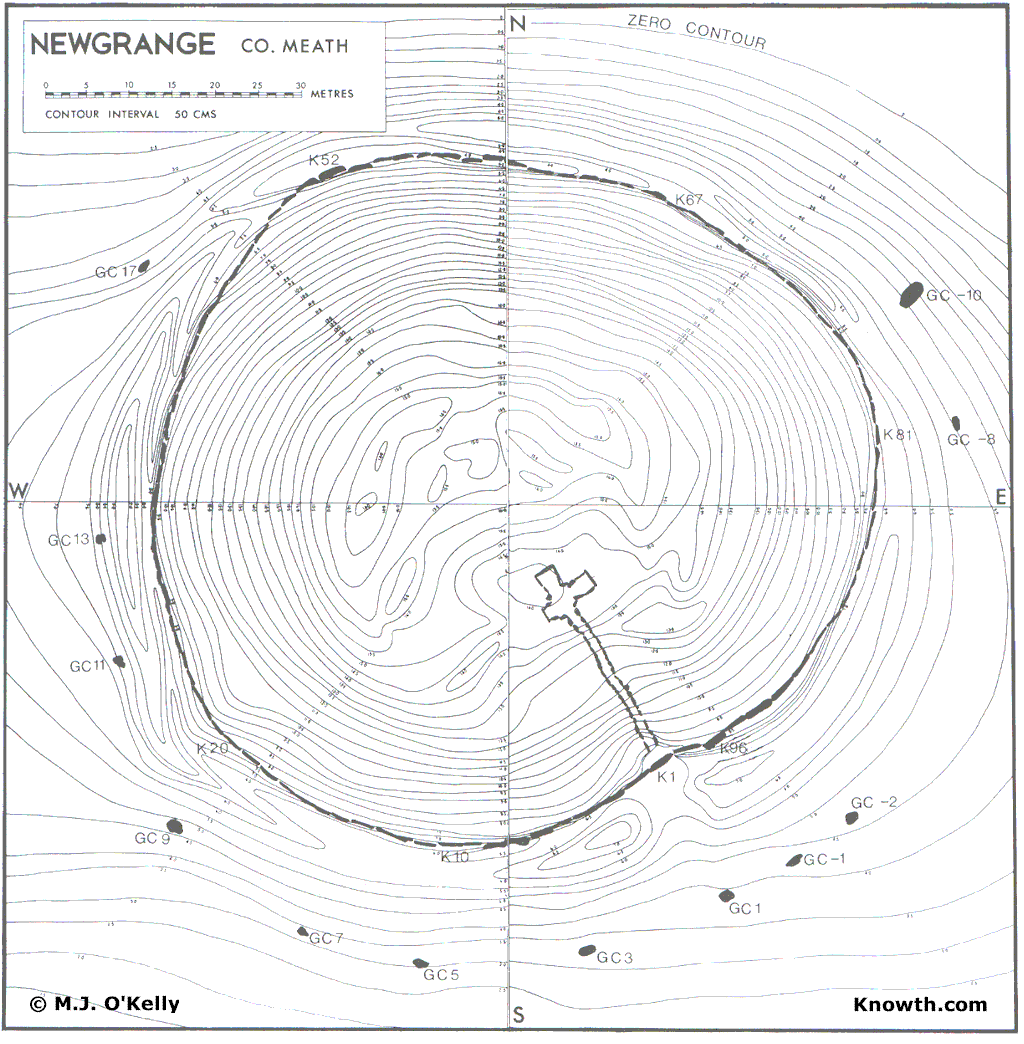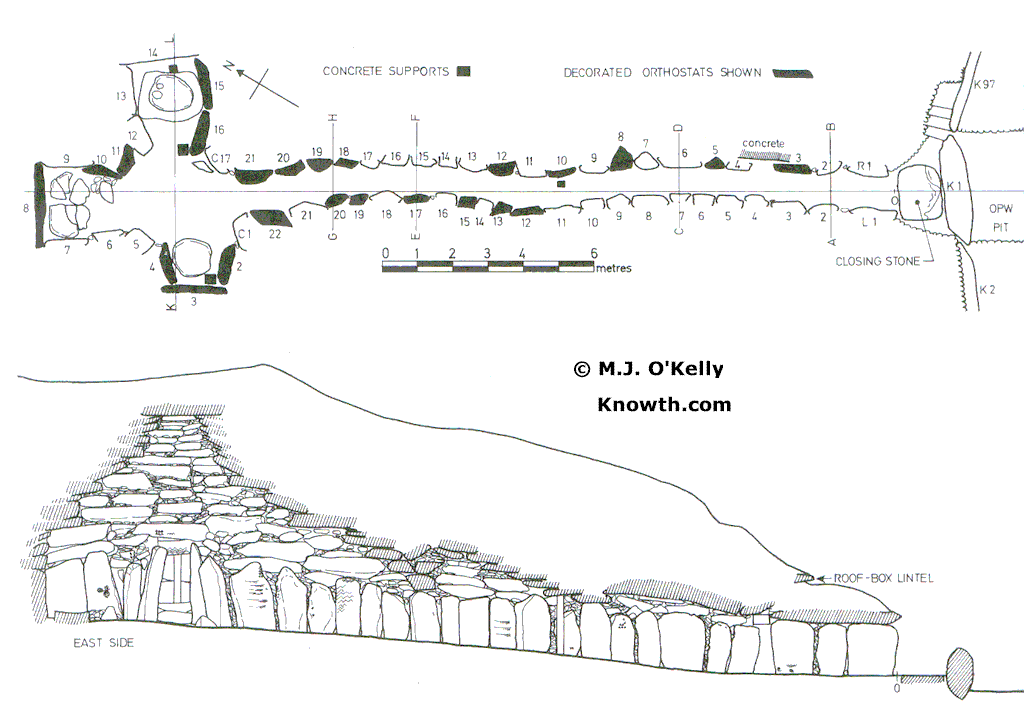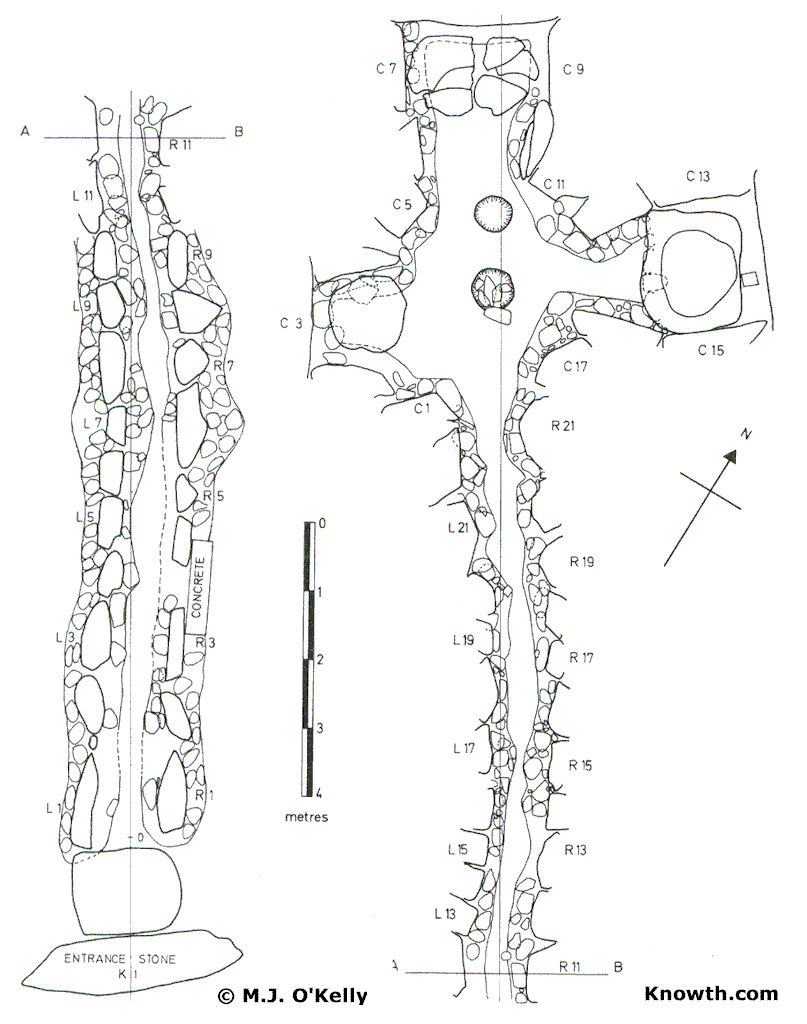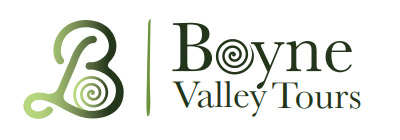Newgrange Plans by Michael J. O'Kelly

Plan of mound at Newgrange showing the passage and chamber

Plan and sectional elevation of the passage and chamber before excavation

Plan of the passage and chamber, the passage is shown in 2 sections
The tomb consists, as the name passage-grave implies, of a passage and chamber, the walls and roof of which are built of large slabs without mortar. A large circular mound or cairn of stones covers the tomb and a kerb of massive slabs laid on their long edges, ends touching, surrounds the base of the cairn and was intended to act as a retaining feature. Surrounding the mound but situated from 7 to 17 metres outside it, is a circle of tall, widely-spaced standing-stones. More ...
Boyne Valley Private Day Tour
 Immerse yourself in the rich heritage and culture of the Boyne Valley with our full-day private tours.
Visit Newgrange World Heritage site, explore the Hill of Slane, where Saint Patrick famously lit the Paschal fire.
Discover the Hill of Tara, the ancient seat of power for the High Kings of Ireland.
Book Now
Immerse yourself in the rich heritage and culture of the Boyne Valley with our full-day private tours.
Visit Newgrange World Heritage site, explore the Hill of Slane, where Saint Patrick famously lit the Paschal fire.
Discover the Hill of Tara, the ancient seat of power for the High Kings of Ireland.
Book Now

Home
| Visitor Centre
| Tours
| Winter Solstice
| Solstice Lottery
| Images
| Local Area
| News
| Knowth
| Dowth
| Articles
| Art
| Books
| Directions
| Accommodation
| Contact
